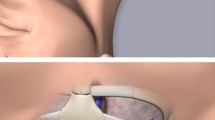Abstract
Background
Arterial and venous pressure is commonly measured using fluid filled catheters. To avoid obstruction they are continuously spilled by a flush-device. The accuracy of the flowrate has not been investigated previously.
Methods
The accuracy of 5 different flush-devices available in Switzerland was checked for flowrate when factory new, after a single sterilization with ethylen-oxide, in a long-term test over 96 hours, after repeated handling of the integrated bypass and under application of a pulsing counter-pressure.
Results
Flow is linearly related to differential-pressure and is constant over time. The flow of each flush-device at 200 mmHg differential-pressure was below the indicated 3 ml per hour (1.69–2.49 ml/h). Sterilization in two types produced a significant but not relevant difference in flowrate. Longtime-use, bypass actuation and pulsing pressure did not alter the flowrate significantly (p<0.05). In two factory-new flush-devices and 4 re-used ones a plugged capillary induced cessation of flow.
Conclusions
Flowrate in flush-devices is accurate under sterilization, longtime use, bypass-actuation and pulsing counter pressure. A plugged capillary occurred in a few new and reused flush-devices, which can be the explanation for clotted catheters in clinical use.
Similar content being viewed by others
Abbreviations
- CP:
-
counter pressure
- DP:
-
differential pressure
- DPT:
-
disposable pressure transducer
- DRP:
-
driving pressure
- FD:
-
flush-device
- FR:
-
flowrate
- G:
-
gauge
- MAP:
-
mean arterial pressure
- NaCl:
-
saline 0.9%
- RBP:
-
reservoir bag pressure
References
Brandt L, Dick W. Klinische Erfahrungen mit einem neuen mehrfach wiederverwendbaren Druckaufnehmer. Anaesthesist 1987;36:450–4.
Hunziker P. Accuracy and dynamic response of disposable pressure transducer-tubing systems. Can J Anaesth 1987;34;4:409–14.
Runciman WB, Rutten AJ, Ilsley AH. An evaluation of blood pressure measurement. Anaesth Intens Care 1981;9:314–25.
Hipkins SF, Rutten AJ, Runci-man WB. Experimental analysis of catheter-manometer systems, in vitro and in vivo. Anesthesiology 1989;71:893–906.
Kleinmann B, Gardner RM, Powell S. Dynamic testing of catheter manometer systems [correspondence]. Anesthesiology 1990;73:1058–9.
Kleinmann B, Powell S. Dynamic response of the ROSE damping device. J Clin Monit 1989;5:111–5.
Kleinman B. Understanding natural frequency and damping and how they relate to the measurement of blood pressure. J Clin Monit 1989;5:137–47.
Allan MWB, Gray WM, Asbury AJ. Measurement of arterial pressure using catheter-transducer systems. Br J Anaesth 1988;60:413–8.
Bentley MW, Lee CM. The frequency response of direct pressure measurement systems. Australasian Physical & Engeneering Sciences in Medicine 1988;11;4:150–5.
Taylor BC, Ellis DM, Drew JM. Quantification and simulation of fluid-filled catheter-transducer systems. Medical Instrumentation 1986;20;3:123–9.
Yeomanson CW, Evans DH. The frequency response of external transducer blood pressure measurement systems: a theoretical and experimental study. Clin Phys Physiol Meas 1983;4;4:435–49.
Schilt W. Verfälschung von Blutdruckwerten bei unzureichender Anpassung des Schwingverhaltens im Katheter-Transducer System. Biomed. Technik 1983;28:112–7.
Gardner RM. Direct blood pressure measurement-dynamic response requirements. Anesthesiology 1981;54:227–36.
Lombholt N, Bille-Bra-he NE, Andersen HR, Djuurhus JC, Bredgaard M. Thin fluid-filled catheters for more accurate detrmination of pressures and their time derivates. Acta Chir Scand 1980;502:27–32.
Matzek F, Boenick U, Frucht U, Schroeder PM. Vergleichende Untersuchung von Einwegtransducern zur invasiven Blutdruckmessung. Biomed. Technik 1989;34:34–41.
Emergency Care Research Institute. Disposable pressure transducers. Health Devices 1988;17:75–94.
Gardner RM, Bond EL, Clark JS. Safety and efficacy of continuous flush systems for arterial and pulmonary artery catheters. The Annals of Thoracic Surgery 1977;23;6:534–8.
Smith RN. Invasive pressure monitoring. American Journal of Nursing 1978;78:9:1514–21.
Gardner RM, Warner HR, Toronto AF Gaisford WD. Catheterflush system for continuous monitoring of central arterial pulse wafeform. J Appl Physiol 1970;29;6:911–3.
Hammer A, Hammer K. Taschenbuch der Physik. 5th reved. Munich: J. Lindauer Verlag, 1974.
Author information
Authors and Affiliations
Rights and permissions
About this article
Cite this article
Michel, C., Roth, F., Feigenwinter, P. et al. The accuracy of the flowrate in flush-devices of disposable pressure transducers. J Clin Monitor Comput 12, 219–224 (1995). https://doi.org/10.1007/BF01207202
Accepted:
Issue Date:
DOI: https://doi.org/10.1007/BF01207202




